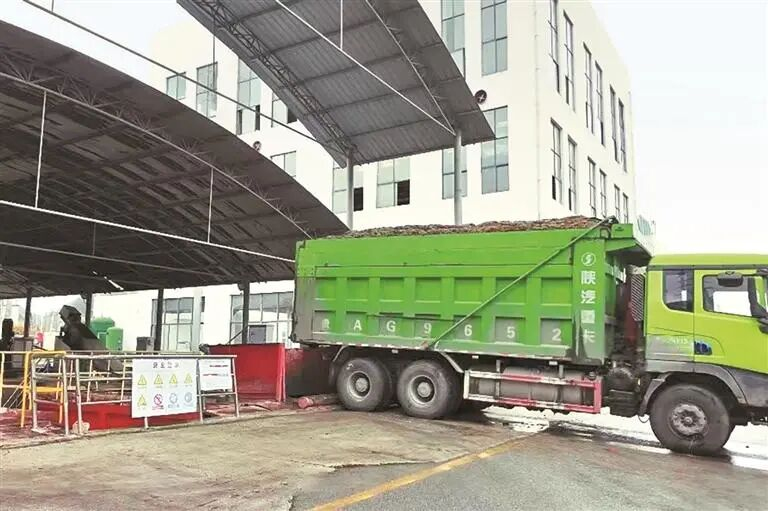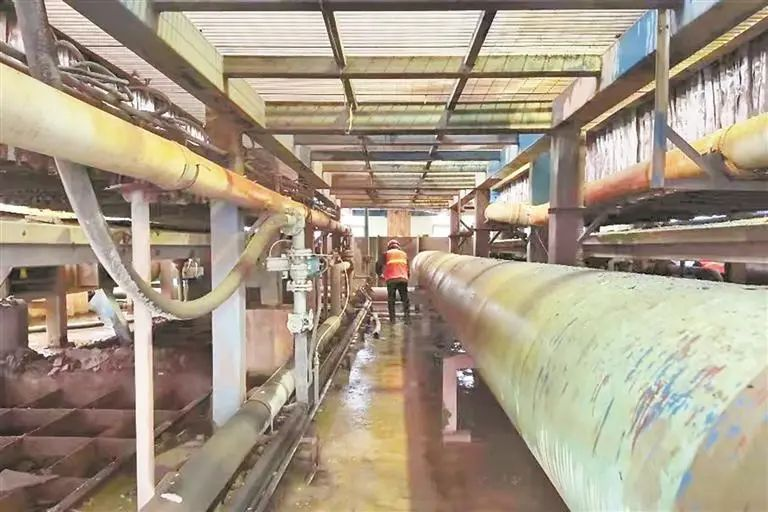Guizhou Daily | Sludge Mountain - Transforming Sludge into Nutritious Soil in Just Three Steps
2025-04-03

Sludge transportation vehicles. Photo by Wang Yao


Inside the Xinzhuang Sludge Drying Center factory area. Photo by Wang Yao
On March 3rd, at dawn, more than ten sludge transport vehicles drove into the Phase II project of Xinzhuang Sludge Drying Center in Guiyang City. A "magic" performance was being performed here - the putrid sludge passed through a closed pipeline, went through three steps of dehydration, fermentation, and aging, and finally transformed into dark organic nutrient soil.
Nearly a hundred trains shuttle here every day, transporting sludge from 34 sewage treatment plants in the city, "said Tang Dalong, Deputy General Manager of Guizhou Zhuxin Water Environment Industry Co., Ltd. of China Water Environment Group. On average, 1 ton of sludge with a moisture content of 60% can be made into 500 to 600 kilograms of organic nutrient soil.
At present, the center can process about 800 tons of sludge per day, accounting for nearly two-thirds of the total sludge in the city.
As the "kidneys" of cities, sewage treatment plants bear the responsibility of purifying water bodies, but the treatment of their metabolic products - sludge - has long plagued urban development.
More than a decade ago, sludge could only be processed through landfilling, "Tang Dalong recalled. The piles of sludge mixed with various pollutants not only occupied a large amount of land, but also posed a hidden danger of polluting groundwater. Every truck of sludge buried was like planting a" time bomb "in urban land.
The extensive model of "treating water but not sludge" has formed a sharp contradiction with the rapid development of cities, and there is an urgent need for more environmentally friendly and efficient technologies to treat sludge harmlessly and as a resource. The Xinzhuang Sludge Drying Center has emerged as a result.
Since its completion and trial operation in 2013, the Xinzhuang Sludge Drying Center has gradually increased its processing capacity. The daily processing capacity of the first phase project has increased from 200 tons to 300 tons, and the daily processing capacity of the second phase project has increased to 500 tons, both of which have been completed and put into operation.
The sludge treatment system is enclosed and equipped with deodorization facilities, effectively reducing the emission of odor gases and other pollutants, avoiding pollution to the surrounding environment, and to a certain extent reducing the impact on the environment, "said Tang Dalong.
The high-temperature fermentation process can effectively kill pathogenic microorganisms and roundworm eggs in sludge, eliminating the potential threat of harmful microorganisms in sludge to the environment and human health.
The dried sludge is mixed and fermented with auxiliary materials to produce organic nutrient soil that meets national standards. It can be used in fields such as landscaping, mine restoration, and home gardening, truly achieving sludge reduction, harmlessness, and resource utilization.
We are collaborating with more research institutions and universities to carry out technological research and innovation in the utilization of sludge resources, and exploring the use of dried sludge in the field of biomass energy. When it comes to future development, Tang Dalong is full of confidence.
In the factory area, the reporter saw saplings cultivated with organic nutrient soil sprouting, silently witnessing the magnificent transformation of "urban metabolites" into "green resources".
Journalist's note
This is a green revolution of sludge. Amidst the roar of the machines at the Xinzhuang Sludge Drying Center, the reporter deeply felt that green productivity is no longer just a slogan, but a technological revolution with the blade inward.
The deeper revelation is that the essence of this transformation is the logical reconstruction of green productivity. When high-temperature sterilization technology replaces landfill and organic soil feeds back into green spaces, the metabolic system of the city finally forms a closed loop - sewage treatment is no longer the "end" of urban governance, but the "starting point" of ecological cycle.
The sludge that was once seen as a burden has turned into hope for mine greening, nutrients for home gardening, and even seeds for future bioenergy through the hands of technology. Practice has proven that green productivity is not an expensive decoration, but a surgical knife to break through the "sludge siege".
 中国水环境集团
中国水环境集团









